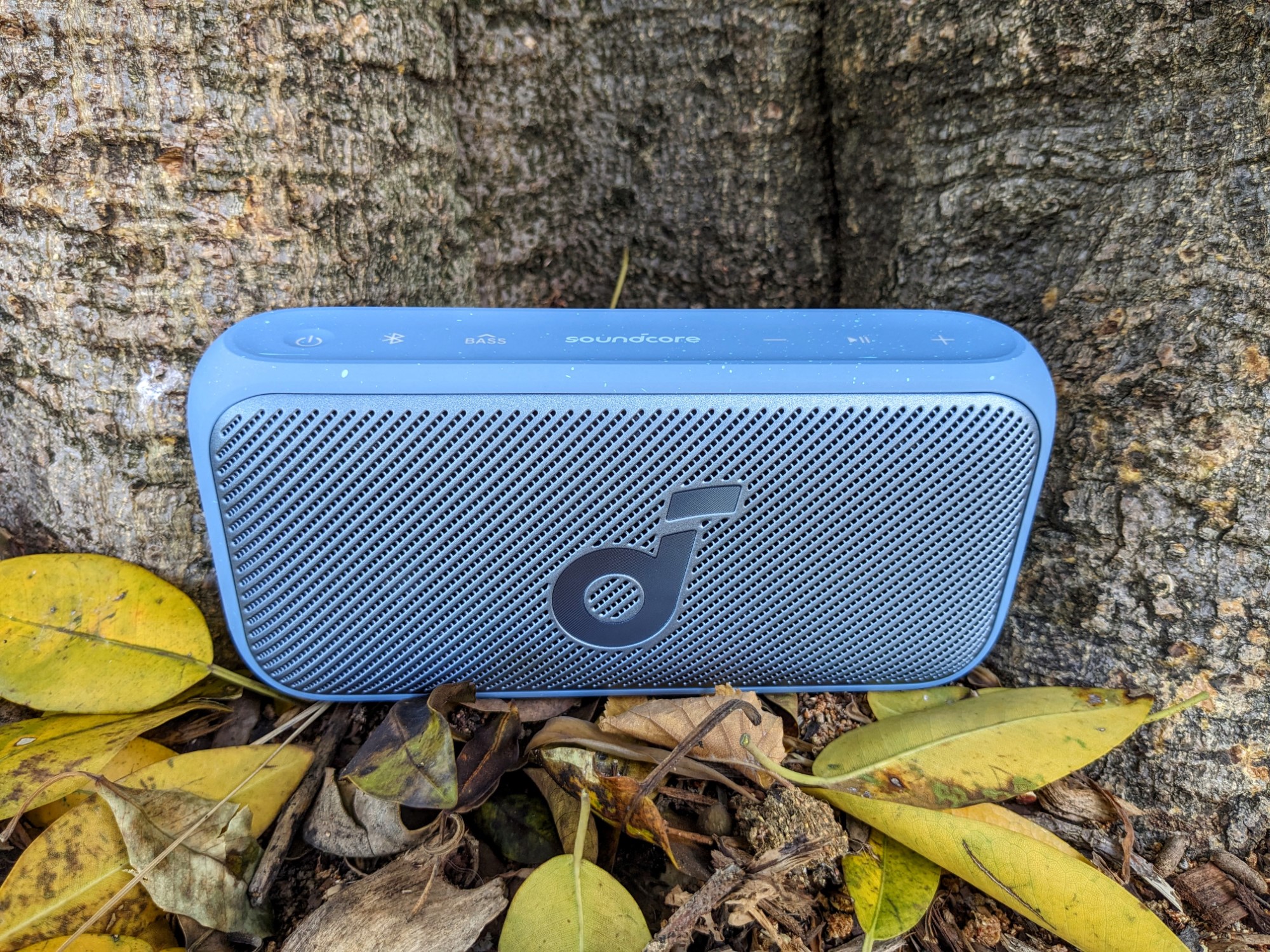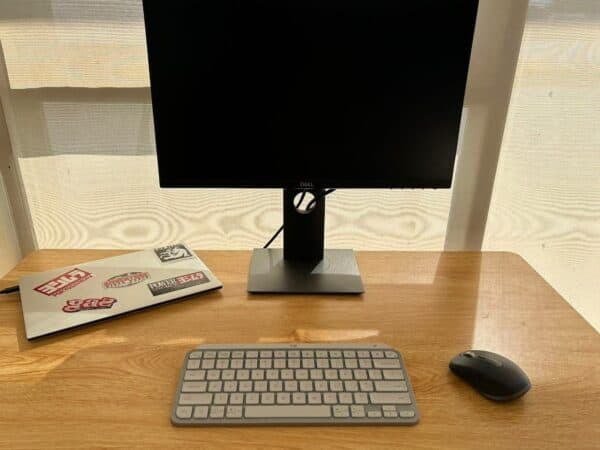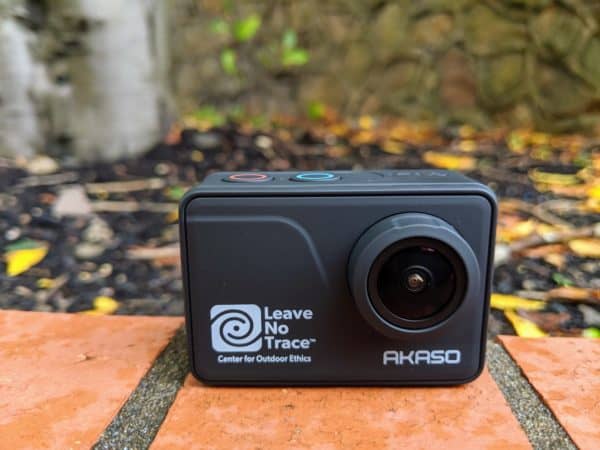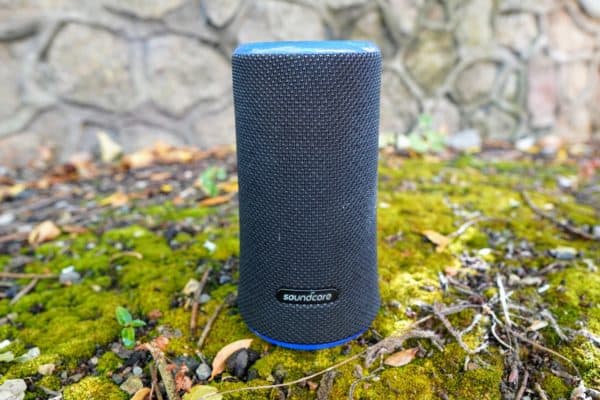Soundcore Motion 300 Review: Great Sound, Better Value
We may earn a commission from purchases you make after clicking links on this site. Learn more.Portable Bluetooth speakers aren’t exactly in short supply these days, but versions I’d actually want to take into the great outdoors with me are a much rarer breed. I’ve tried plenty of them, and most have some glaring flaw that keeps them out of my backpack.
So often they’re too big and heavy, have terrible battery life, aren’t tough enough, or simply just sound terrible. If I’m going to go to the effort of dragging something out on an adventure with me, it has to be worth the effort.
Of the few that pass all of those tests, most are too expensive for me to want to risk them getting damaged, broken, or left behind at a campsite somewhere when I’m packing up in a hurry.
And then the Soundcore Motion 300 popped up on my radar. The price and specs sounded promising…but then again, they so often do. Like so many other gadgets out there, the only way to really know if it was any good was to hold it in my hand and use it for an extended period.
So that’s what I did.
About this review: I tested the Soundcore Motion 300 in a wide range of environments for two weeks, using the latest firmware at the time (2.1.5).
Design and Box Contents
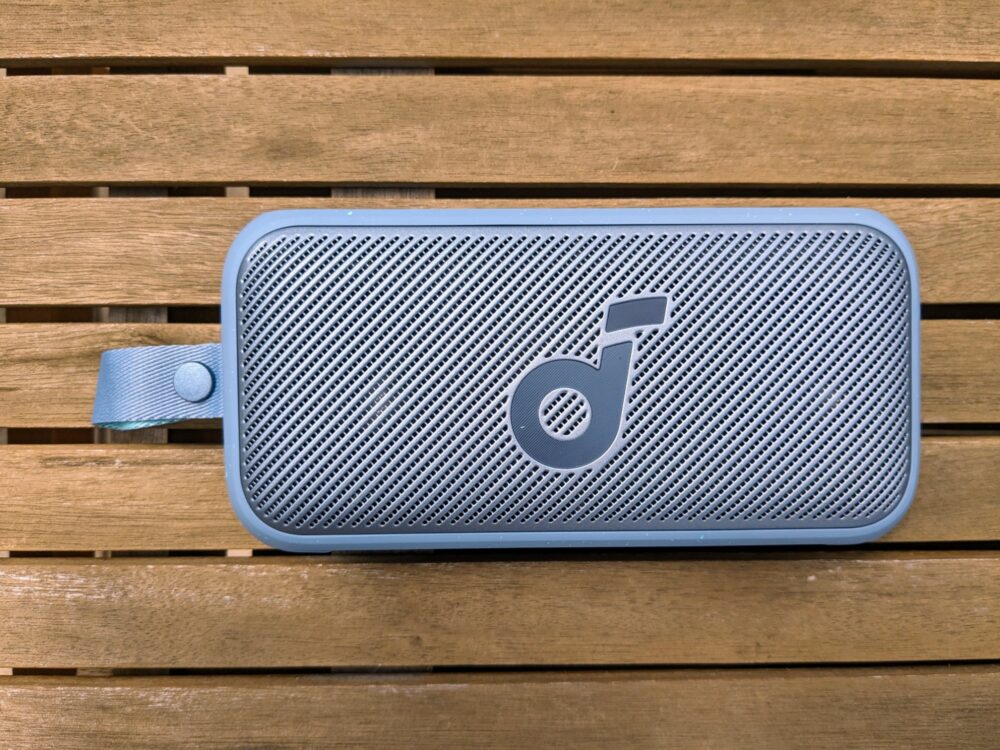
The Motion 300 comes in a compact little box with the bare minimum of accessories. The speaker itself takes up almost all of the space inside, and there’s a short USB C charging cable and the obligatory safety information booklet in several different languages that nobody ever reads. That’s it. There’s no wall charger, although that’s pretty normal these days.
You can get the speaker in three different colors: mine is an unusual, slightly flecked Frost Blue, which stands out nicely from the sea of generic black gadgets out there. If you prefer generic black, however, that’s an option, and there’s a green version available as well.
The first thing I noticed as I pulled it out of the box is that this speaker has a bit of weight behind it. I’ll talk more about that in the Portability section below, but for now, suffice it to say that this isn’t a “drop it in your pocket” kind of portable speaker.
One of the most interesting things about the Motion 300 is that it’s designed to be used in three different orientations: standing up, lying down, or hanging from the removable strap. To that end there are two sets of rubber pads on the speaker to keep it stable, one for when it’s upright, the other for when it’s laying on its back.
Because the sound (especially the bass) changes with the speaker orientation, you can also use the Soundcore app to set different equalization profiles for each one. Again, more on that below.
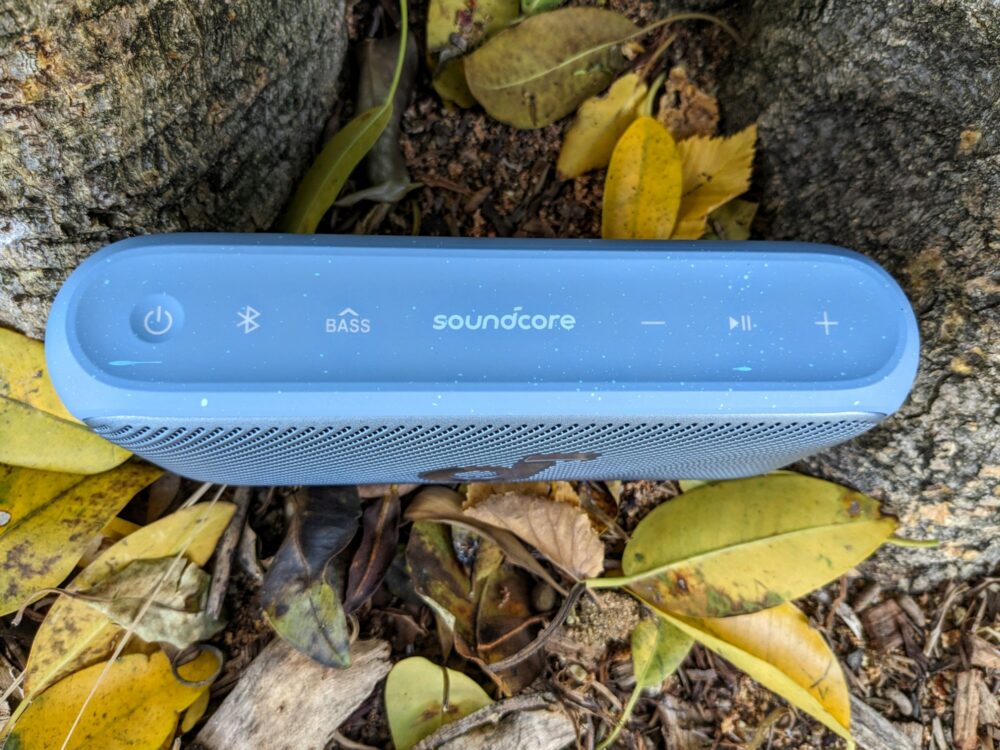
One of the long edges has all of the control buttons that you’d expect: power, Bluetooth pairing, bass boost, play/pause/skip and volume. The power button is recessed to make it easier to identify by touch, but all of the buttons light up so you can find them at night anyway.
On the side, a thick rubber seal covers the USB C charging port. That seal helps with the IPX7 rating of this speaker: in layperson’s terms, that means you can submerge it in a few feet of water for up to half an hour and it’ll still keep working. A few splashes around the pool or a sudden downpour won’t trouble it in the slightest.
Portable speakers like this inevitably get dropped and knocked around: with that in mind, the case is made entirely of soft-touch silicone other than the metal grill on the front. That gives me some hope for its durability, although I haven’t (yet) thrown it down the stairs to test this.
Two separate drivers deliver a total 30W of stereo sound, which is substantial for a portable speaker. The Motion 300 is bigger than many of its rivals of course, so it’s easier to fit larger drivers inside, but suffice it to say that this is not a speaker you’ll be struggling to hear.
There’s also an inbuilt microphone, so you can take and make calls using this speaker. Assuming you don’t mind everyone else nearby taking part in the conversation, of course.
Pairing and Connection
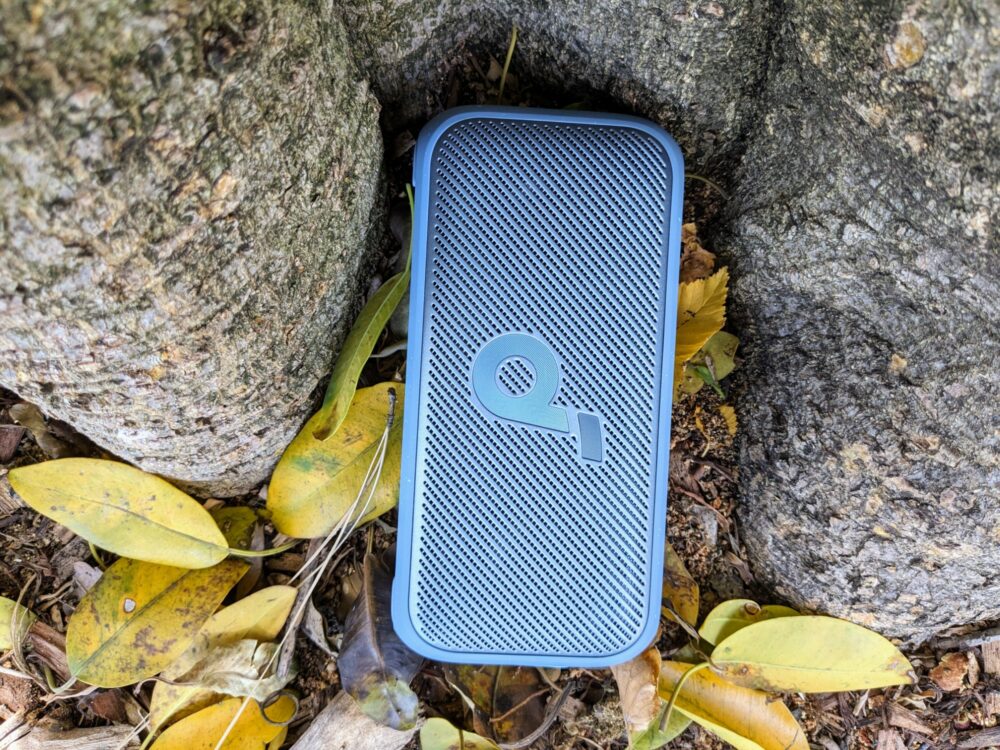
Common to other Soundcore speakers I’ve tested, the Motion 300 sounds an aggressive chime whenever you turn it on or off. As with those other speakers, you can thankfully turn this off in the app: it’s called “voice prompt”, for reasons that escape me since there’s no voice involved.
Bluetooth pairing couldn’t have been easier. The speaker put itself into pairing mode when I turned it on for the first time, and my phone picked it up straight away. To connect it to a second device, I just held down the Bluetooth button on the speaker until it started flashing, and repeated the process.
It’s apparently also possible to connect two Motion 300 speakers together in what Soundcore calls True Wireless Stereo (TWS) mode. I don’t have a second one to test this with, but apparently it splits the stereo signal in two, so that you can move them some distance apart with one speaker playing the left channel and the other the right.
I tested the speaker over the course of a couple of weeks, in several different indoor and outdoor environments. Inside, I couldn’t get the connection to drop or stutter even when I went up three flights of stairs and outside onto a balcony: audio kept streaming the entire time. While writing this review I’ve had music playing for several hours straight; again, I’ve noticed no glitches or dropouts.
Outdoor conditions are usually easier for Bluetooth devices, since there tends to be fewer obstructions to get in the way of the signal. So it proved here as well: at the park I walked at least two hundred feet away from the speaker with my phone in my hand, and it just kept happily playing Miley Cyrus’s Flowers loud enough to be heard from, well, two hundred feet away. I hope everyone else around me was as big a Miley fan as I am.
Audio Quality and Volume
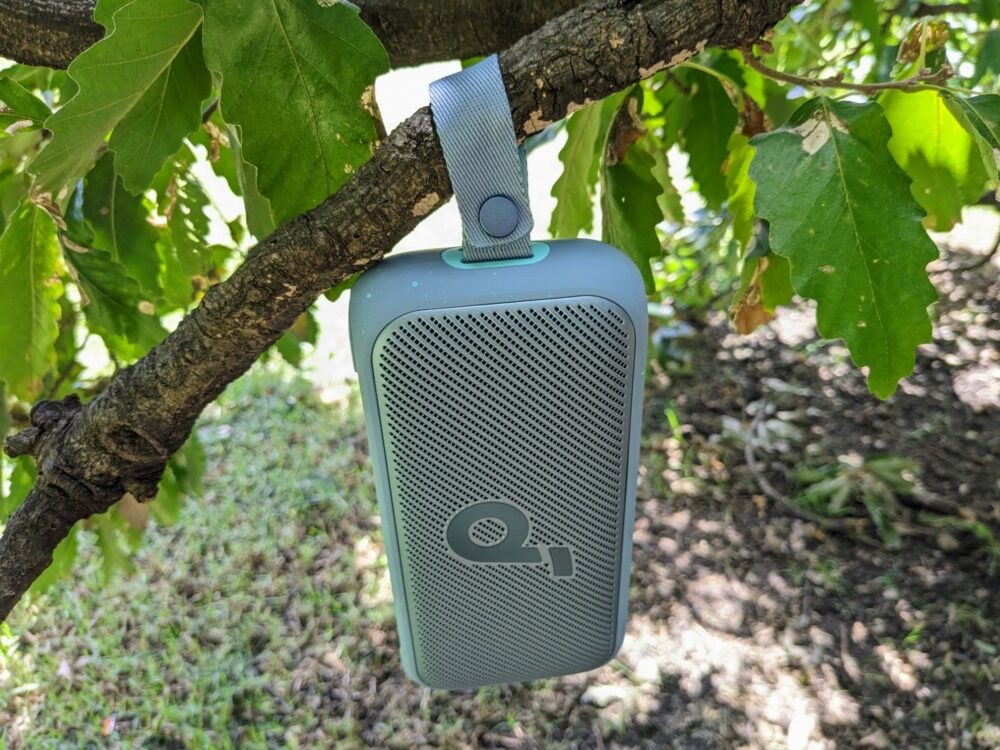
The real question with any speaker, portable or otherwise, is what it sounds like and whether it’s loud enough for the situations you want to use it in.
In my office, which is about the size of a small bedroom, I never had the volume at more than about a quarter. Beyond that, it was too loud for comfortable listening. In larger rooms in the house, I’d have it somewhere around half, depending on whether I was actively listening or just wanted some background music.
Outside is where the real test is, of course. On my terrace, with wind, birds, and the background noise of an inner city suburb to compete with, the sweet spot was between half and two-thirds. Any more than that and I felt like I was going to start getting complaints from the neighbors!
That volume is where the speaker felt like it performed best. At low levels it was fine for podcasts, especially using the “Voice” profile, but music sounded a little flat and washed out. Changing EQ settings and/or speaker orientation helped a bit, but it still just sounded a lot more full and rich at higher volumes.
At those volumes, though, the Motion 300 sounded better than any other small speaker I’ve used in the same price range. From the pop punk of Green Day’s latest album to the pure pop of Taylor Swift, classics like Bruce Springsteen, Pink Floyd, and the Eagles, and a wide range of classical, chillout, and R&B tracks, it was one of the more enjoyable set of portable speaker tests I’ve done in recent years.
If you’re into EDM or other bass-heavy music, it’s perhaps still a little light even on the “Xtra-Bass” setting, but everything else I played sounded really pretty good.
What I would say, though, is that it didn’t necessarily sound good immediately. This is one speaker where playing around with the EQ to match the type of music you’re listening to pays dividends. While the various presets are OK, I got better results by creating custom profiles and switching between as needed.
Late one afternoon in a big park near my house, I decided it was time to try out maximum volume for a while. It was certainly loud, to the point where I was getting looks from a guy walking his dog a few hundred feet away.
There was some clipping and distortion in mid-range frequencies at that volume, not to the point where it made it unlistenable, but certainly enough to be noticeable. Dropping the level back to around 85% eliminated the distortion completely, so that’s probably what I’d recommend as a sensible maximum.
The Soundcore App
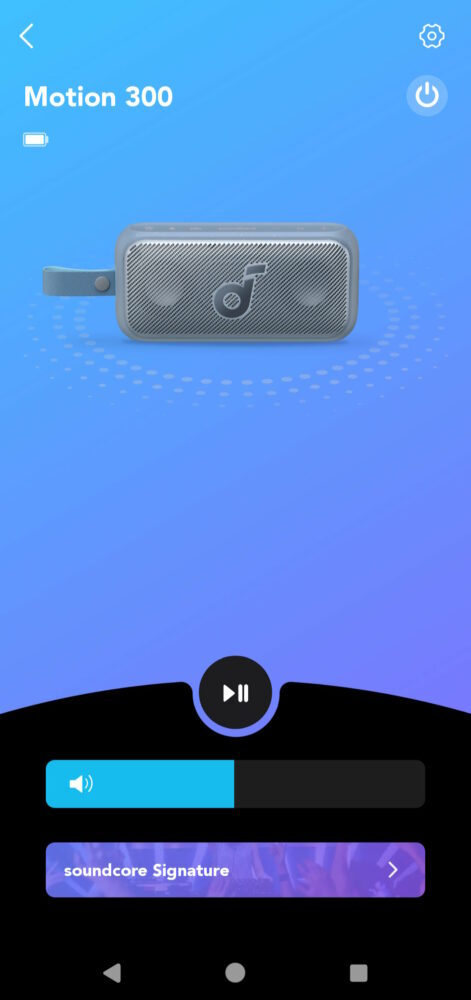
Soundcore has a companion app that works across pretty much its entire range of audio gear, and that includes the Motion 300. Some devices have what feels like a near-endless range of settings and options to play with, but there are comparatively few here.
Other than basic settings like how bright you want the button backlighting to be or how long it takes for the speaker to automatically power off, most of the options are tucked away in the Equalizer section. Here, you can choose whether you want the speaker to change its sound profile based on its orientation, in something Soundcore calls “Adaptive Direction”.
It’s on by default, with the idea that you don’t need to think it about too much: the speaker will sound good whichever way it’s facing. If you want to tweak things, “Standing”, “Hanging”, and “Lying” all have their own custom profiles that you can change as much you like.
If for some reason you don’t want the EQ to change when you flip the speaker over or hang it up, just turn off adaptive direction: now, a single profile applies all the time.
If the device you’re streaming from supports LDAC for higher-quality audio (many Android phones do), you’ll be pleased to hear that the Motion 300 does as well. It’s a simple setting change that takes a few seconds to switch, although there’s a hit to battery life that comes with it.
There was a small but noticeable improvement in audio quality when I enabled it, and I didn’t experience any of the potential connection instability that the app warned me about.
Battery Life and Charging
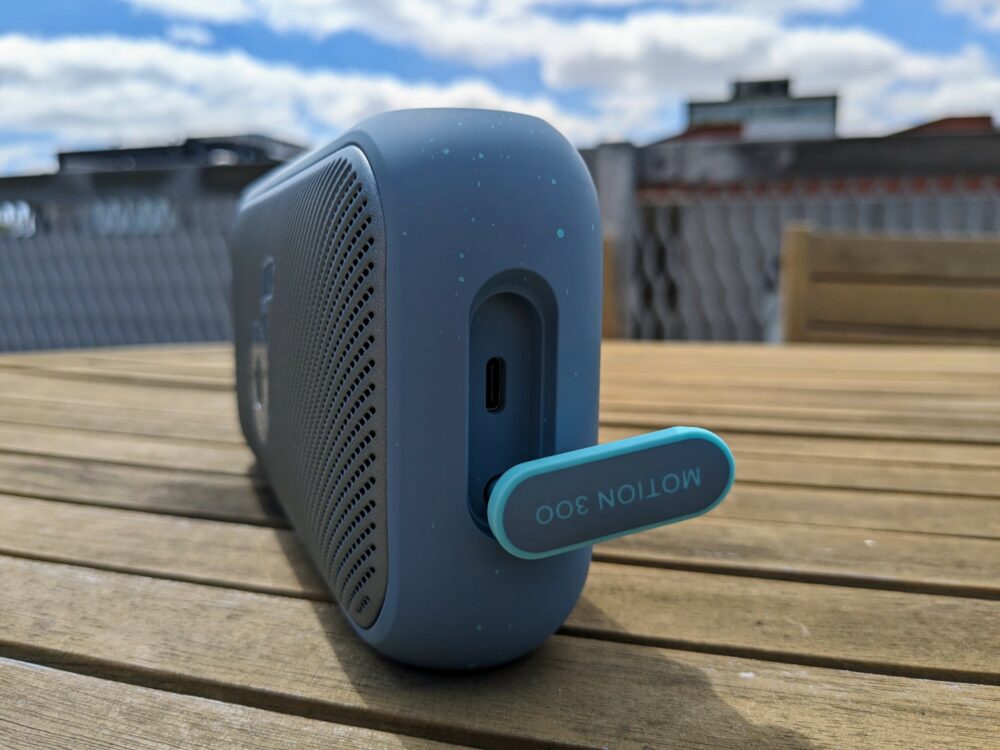
Soundcore rates the speaker as having 13 hours of battery life, although it doesn’t specify under what sort of conditions. I haven’t had the opportunity to throw an all-day pool party during my testing period, more’s the pity, but I still managed to drain the battery over the course of a few days.
About half the time, the speaker was playing background chillout music on the default EQ setting, at around one-third volume. The rest of the time was a mixture: loud rock music outside, podcasts while making dinner, low-fi beats to wind down before bed.
With that particular combo, I managed to exceed Soundcore’s estimates. Starting with a full charge, I got fifteen hours and twenty minutes of playback before it finally shut down.
That’s an impressive time between charges, albeit not quite the longest I’ve seen from a portable speaker. If you did need to eke out a bit of extra battery life, you can do things like turning down the volume and bass boost and changing the auto power-off setting in the app: you can choose between five, ten, twenty, and sixty minutes.
When I did eventually manage to run it dry, it took just under three hours to get back to 100% from the same 20W wall adapter I usually charge my phone with.
It’s worth noting that despite the relatively high-capacity 3350mAh battery inside this speaker, it doesn’t double as a power bank to charge your phone. When I saw the specs and the USB C socket, I hoped that it might: alas, not to be.
Portability
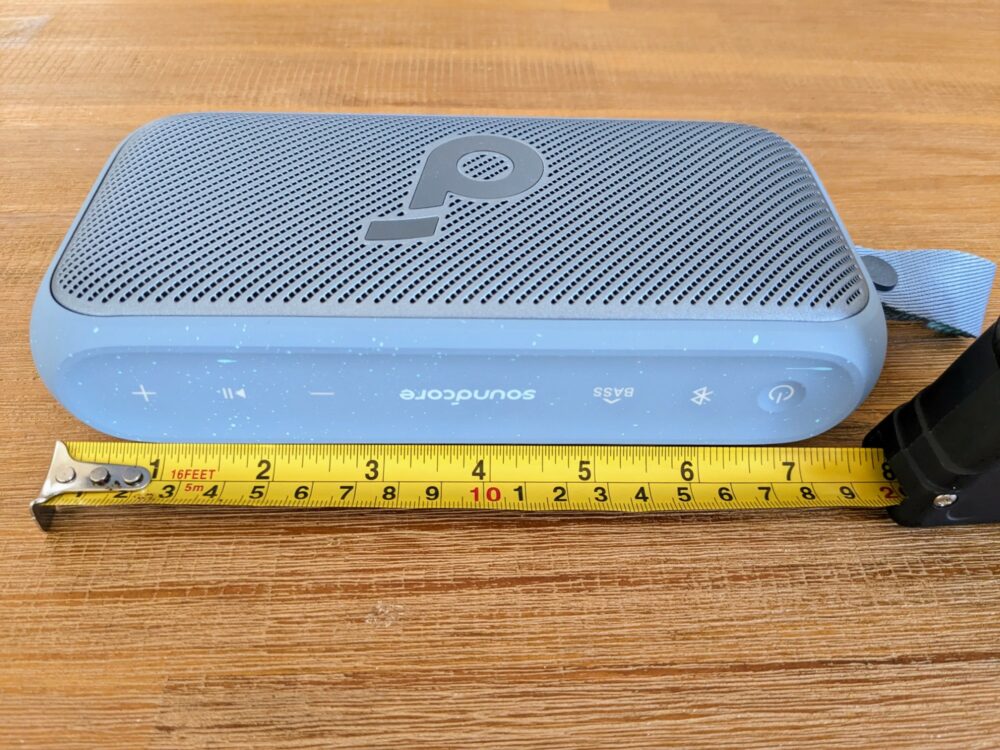
So now we turn to the elephant in the room: the Motion 300’s size and weight. At 7.9 by 3.6 inches and 26.9 ounces (760g), all that volume and battery life don’t come for free. It’s not the chonkiest Bluetooth speaker I’ve ever used, but it’s not exactly svelte either.
This is the point where I start to distinguish between a travel speaker and a portable one: while it’s clearly designed to be carried around and used outside the house, it’s likely just a little too bulky to justify dropping in my bag when I’m flying somewhere.
I was interested to see whether it was a speaker I’d be happy to take hiking with me. No, not to hang it off my backpack and annoy everyone I pass, but more for sitting around a campfire with some chilled-out tunes once I got to my destination.
With that in mind, I dropped it in my pack alongside all the usual day-hiking stuff, and headed off for a twelve-mile walk with a friend one morning. There was a convenient picnic spot at the turnaround point, so we hung the speaker from a nearby tree and listened to music for an hour or so over lunch.
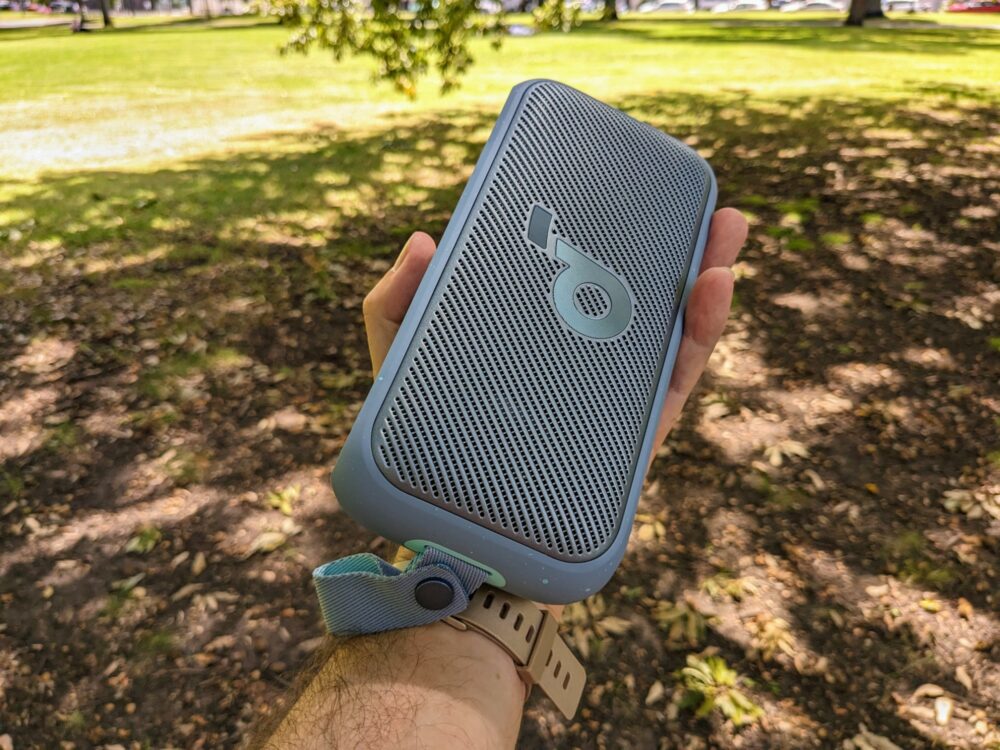
At the end of that, I was undecided about whether the Motion 300 was something I’d take hiking in the future or not. I’m not really someone who blasts loud music when I’m out in nature, so all that extra volume felt a bit wasted in that situation.
While I love the longer battery life and better sound quality than I get from my other portable speakers, I didn’t love the extra bulk quite as much. I think that in general, it’d come with me on shorter hikes if I had the room and weight allowance, but stay at home for longer treks.
For any other kind of use inside or outside the house, though, it’s great. When I went to that nearby park with it, I just threw it in my daypack along with some water, snacks, and a picnic blanket, and didn’t notice the difference. Car camping, a day at the beach, having a BBQ with friends in the backyard; it’s the perfect companion for all of them.
Get regular updates from the world of travel tech and remote work
News, reviews, recommendations and more, from here and around the web
Should You Buy This Speaker?
Soundcore has done well with the Motion 300, especially when you consider what it costs. It retails for well under a hundred bucks, and for that you get a portable speaker that’s small enough to drop in a day bag and still has good battery life, plenty of volume, and impressive audio quality for its size.
Rugged enough to handle plenty of abuse, yet attractive enough that you won’t mind putting it on your bookcase or kitchen counter, it’s just a little too large to be a true travel speaker.
For any other outdoor activity that doesn’t require you to carry it for twenty miles or deal with airline carry-on requirements, however, I can’t think of another model that sells for anywhere near this price that I’d suggest buying instead.
Recommended.
Pros
Cons
All images via author

